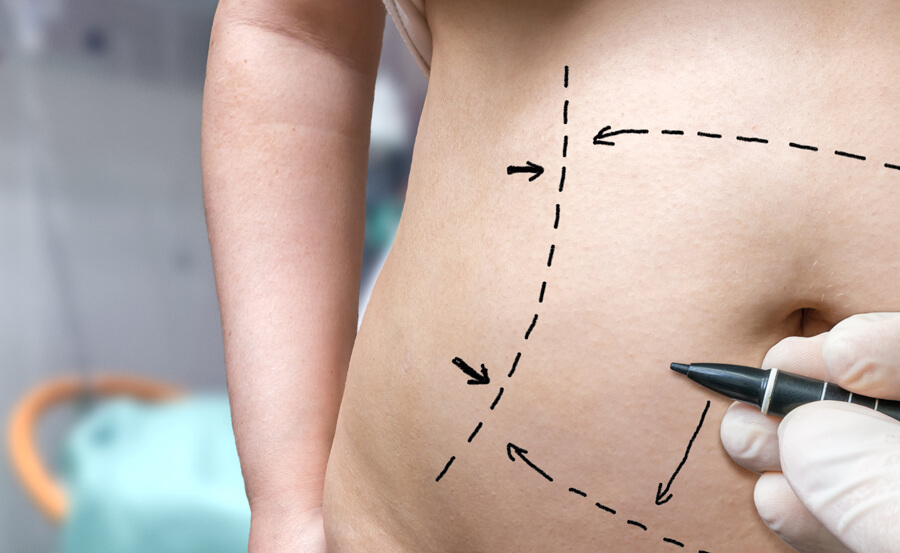(913) 754-4939
7901 W. 135th Street, Overland Park, KS 66223
Abdominoplasty

Model pictured is not an actual patient.
Abdominoplasty, more commonly known as a tummy tuck or body contouring, is a surgical procedure that removes excess fat and skin in an effort to firm and tighten the belly. The procedure targets loose skin, weakened muscles and fat deposits. A tummy tuck is not a substitute for healthy diet, exercise or weight loss, but it may help a patient continue a healthier lifestyle.
The kind of abdominoplasty — mini, modified, full, extended, circumferential — depends on each patient’s specific needs. Dr. Surek will help to guide this process.
Am I a good candidate for abdominoplasty?
Ideal candidates for abdominoplasty already maintain a healthy lifestyle, with both diet and regular exercise. A candidate should be within 20% of his or her ideal body weight and be physically and emotionally healthy.
What should I expect during the consultation?

Model pictured is not an actual patient.
Patients begin the process with a consultation with Dr. Surek and staff. During the visit, you will discuss your medical history and will be asked to stand in front of a full-length mirror to discuss your goals. Dr. Surek will evaluate your torso, from the breastbone to the knees, on both the front and back side. Staff will review details of the surgery, including facilities, costs, preoperative routines, and possibly set up a preoperative appointment.
How is the surgery performed?
Abdominoplasty surgery is performed while the patient is under full anesthesia, under the care of a board-certified anesthesiologist, in an accredited outpatient or hospital surgery setting. The procedure typically takes about three hours, but the specific time depends on each patient and the amount of skin to be removed.
The kind of surgery depends on the patient’s individual goals. In most cases, the surgery begins with the patient face down, on their stomach, in order to address fat deposits on the hips and thighs. The patient is flipped onto the back during surgery so that the front of the tummy may be restored and the waistline can undergo liposuction.
Most patients will have a traditional hip-to-hip abdominoplasty, but several other options are available. For example, some patients will have a mini abdominoplasty, requiring only small incisions to remove small amounts of skin. With an extended abdominoplasty or circumferential abdominoplasty, more skin and stretch marks are removed, plus muscles are tightened and fat deposits removed from the hips and thighs. Patients who have experienced extreme weight loss from bariatric surgery may have a circumferential abdominoplasty to remove extra, loose skin.
Patients must not use any tobacco products for two months before surgery.
Whether you’re ready to schedule a consultation or have additional questions about the procedure, we’re here for you. Contact Surek Plastic Surgery today.


